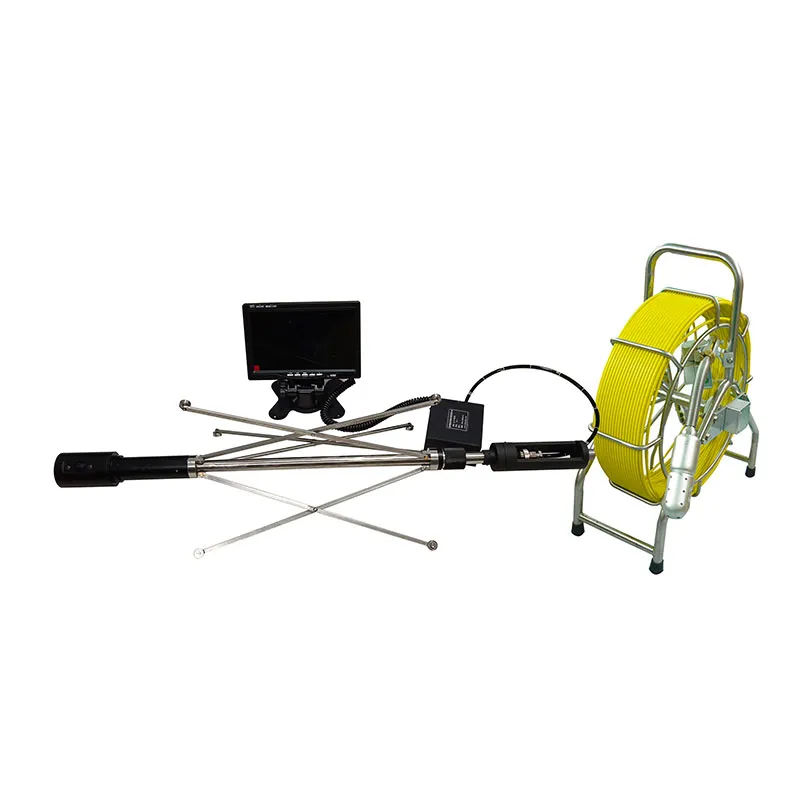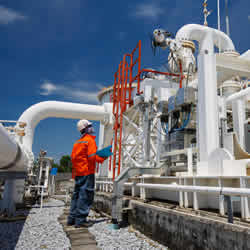Guaranteeing Sturdiness with Thorough Pipeline Welding Inspection
Understanding the Fundamentals of Pipeline Welding Examination: Important Aspects for Examining Weld Quality and Averting Failures
In the world of pipe welding examination, the stakes are without a doubt high, requiring a thorough understanding of basic concepts to guarantee weld top quality and reduce failing dangers. Numerous crucial variables enter into play, consisting of the choice of suitable materials, the application of advanced inspection techniques, and the acknowledgment of prevalent welding flaws. Moreover, adherence to regulative standards plays an essential duty in maintaining system stability. Yet, the complexities inherent in these processes elevate vital concerns regarding ideal techniques and arising technologies that could redefine assessment methods-- inquiries that necessitate more exploration.
Relevance of Weld High Quality
The integrity of a pipeline is essentially dependent on the high quality of its welds, making weld quality a vital consider guaranteeing safe and effective procedure. A pipe weld works as a junction factor where materials are joined, and any kind of deficiencies in this area can bring about considerable architectural weak points. Poor weld high quality can cause leaks, ruptures, and tragic failures, positioning significant safety and security risks and environmental dangers.
Several elements add to the quality of a weld, including the selection of welding process, the skills of the welder, and the conditions under which the welding is executed - Pipeline Welding Inspection. Inadequate preparation, improper warmth input, and contamination can compromise weld integrity, causing issues such as porosity, insufficient blend, or fractures. Therefore, rigorous high quality control measures have to be executed throughout the welding process to minimize these threats
Furthermore, the lasting performance of a pipeline is heavily influenced by the longevity of its welds. Top quality welds not only improve the total stamina of the pipeline yet likewise expand its life span, reducing the need for expensive repairs and downtime. Hence, guaranteeing remarkable weld high quality is critical in pipe layout and maintenance techniques.
Trick Assessment Strategies
Making certain weld quality necessitates the implementation of reliable assessment strategies to recognize potential imperfections before they bring about failings. Pipeline Welding Inspection. Amongst the most extensively utilized techniques are visual evaluation, radiographic screening (RT), ultrasonic testing (UT), and magnetic bit screening (MT) Each technique offers an unique function and is chosen based upon the specific requirements of the pipe job
Visual inspection is the first line of defense, permitting examiners to assess surface area problems, alignment, and total handiwork. It is a cost-efficient and fast technique that can expose evident defects. Radiographic testing supplies a comprehensive sight of interior weld stability by utilizing X-rays or gamma rays to discover subsurface imperfections. This strategy is especially effective for determining fractures, inclusions, and spaces.
Ultrasonic testing employs high-frequency audio waves to review the thickness and stability of welds, making it ideal for discovering inner stoppages. Magnetic bit testing is a dependable approach for recognizing surface and near-surface flaws on ferromagnetic products by using electromagnetic fields and fine ferrous bits. By using these essential evaluation strategies, pipeline welding inspectors can make certain the highest possible quality standards are kept, eventually leading to more secure and extra dependable pipe systems.
Common Welding Flaws
In the realm of pipe welding, understanding common welding flaws is crucial for maintaining structural integrity and security. These issues can lead to disastrous failures otherwise recognized and attended to quickly. Amongst the most common flaws are porosity, which takes place when gas allures in the weld steel, producing spaces that deteriorate their explanation the joint. One more considerable concern is absence of blend, where the weld metal does not appropriately bond with the base product, compromising the joint's strength.

Cracks are additionally an important issue, manifesting in various forms such as hot splits, chilly splits, and root splits. Each type postures special challenges and needs specific assessment techniques for detection. Undercut is another issue that can reduce the weld's cross-sectional location, bring about tension focus points, while slag incorporation happens when non-metallic product becomes caught in the weld swimming pool, negatively impacting the mechanical homes of the weld.
Additionally, inaccurate bead shape can lead to irregular tension circulation. Identifying these typical defects is essential for welders and examiners alike, as early discovery and modification are crucial to making sure the long life and reliability of pipe systems.

Products and Their Influence
Selecting the proper products for pipeline welding substantially affects the overall performance and reliability of the bonded joints. The choice of base metals, filler materials, and coatings plays an important function in figuring out the strength, rust resistance, and durability of the welds. For circumstances, carbon steel is commonly used for its balance of strength and cost, however it might be vulnerable to rust in certain settings, demanding using corrosion-resistant alloys or safety layers.
In addition, dissimilar metal welding calls for mindful consideration of thermal growth buildings and prospective galvanic corrosion. The compatibility of materials can significantly impact the microstructure of the weld, leading to variations in mechanical residential properties. For instance, stainless steel provides excellent corrosion resistance yet might need details filler materials to make sure a sound weld joint.
On top of that, the you could try here effect of temperature and environmental conditions on product choice can not be undervalued. High-strength steels may lose ductility at elevated temperatures, while low-temperature applications might call for products with enhanced toughness. Ultimately, recognizing the ramifications of material options is necessary for attaining optimal weld quality and stopping failures in pipe systems.

Regulative Requirements and Compliance
Governing standards and compliance play a critical function in pipeline welding, developing the framework within which safe and reliable practices are kept. These criteria are created by various organizations, including the American Society of Mechanical Designers (ASME), the American Welding Society (AWS), and the Pipeline and Hazardous Products Safety Management (PHMSA) Following these policies makes sure that welding procedures fulfill the needed quality and security standards.
Conformity with regulatory requirements is crucial not only for making certain the integrity of the welds yet also for protecting the environment and visit this web-site public safety and security. Inspectors are charged with verifying that welding operations follow these criteria via strenuous examinations of both the procedures and the last welds. This entails reviewing welder credentials, welding treatments, and the materials used.
Failure to follow well established guidelines can result in significant consequences, including costly fixings, legal responsibilities, and disastrous failures. Consequently, organizations need to incorporate compliance into their functional practices, fostering a society of security and high quality. Regular training and audits are vital elements in keeping adherence to these regulatory requirements, ensuring that all personnel are educated and geared up to promote the highest degree of pipeline welding high quality.
Final Thought
To conclude, an extensive understanding of pipe welding inspection is crucial for making certain weld top quality and protecting against failures. By using essential evaluation methods and recognizing common welding problems, examiners can properly examine the integrity of welds. Factor to consider of product option and adherence to governing criteria better boost the dependability and safety of pipeline systems. Ultimately, these methods add to the avoidance of leaks and disastrous failings, highlighting the crucial relevance of rigorous examination procedures in pipeline building and upkeep.
In the realm of pipe welding inspection, the stakes are without a doubt high, requiring a detailed understanding of essential concepts to guarantee weld high quality and mitigate failing dangers (Pipeline Welding Inspection).The stability of a pipeline is basically reliant on the quality of its welds, making weld top quality a critical variable in making sure safe and reliable procedure.Several factors add to the quality of a weld, consisting of the option of welding procedure, the skills of the welder, and the problems under which the welding is done. Undercut is another issue that can decrease the weld's cross-sectional location, leading to anxiety concentration factors, while slag inclusion happens when non-metallic material ends up being entraped in the weld pool, adversely influencing the mechanical residential or commercial properties of the weld
In conclusion, a detailed understanding of pipeline welding assessment is vital for guaranteeing weld high quality and preventing failures.